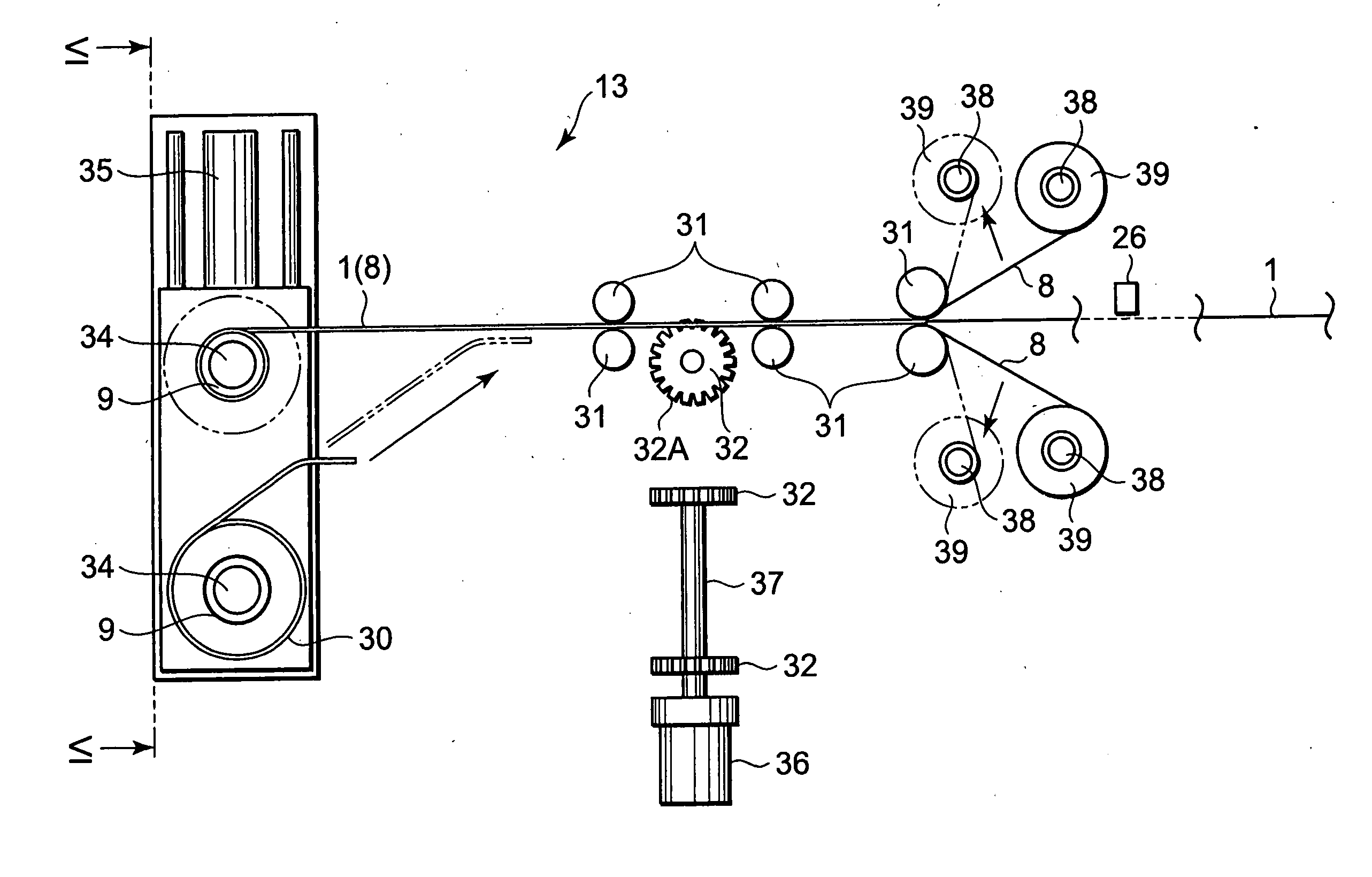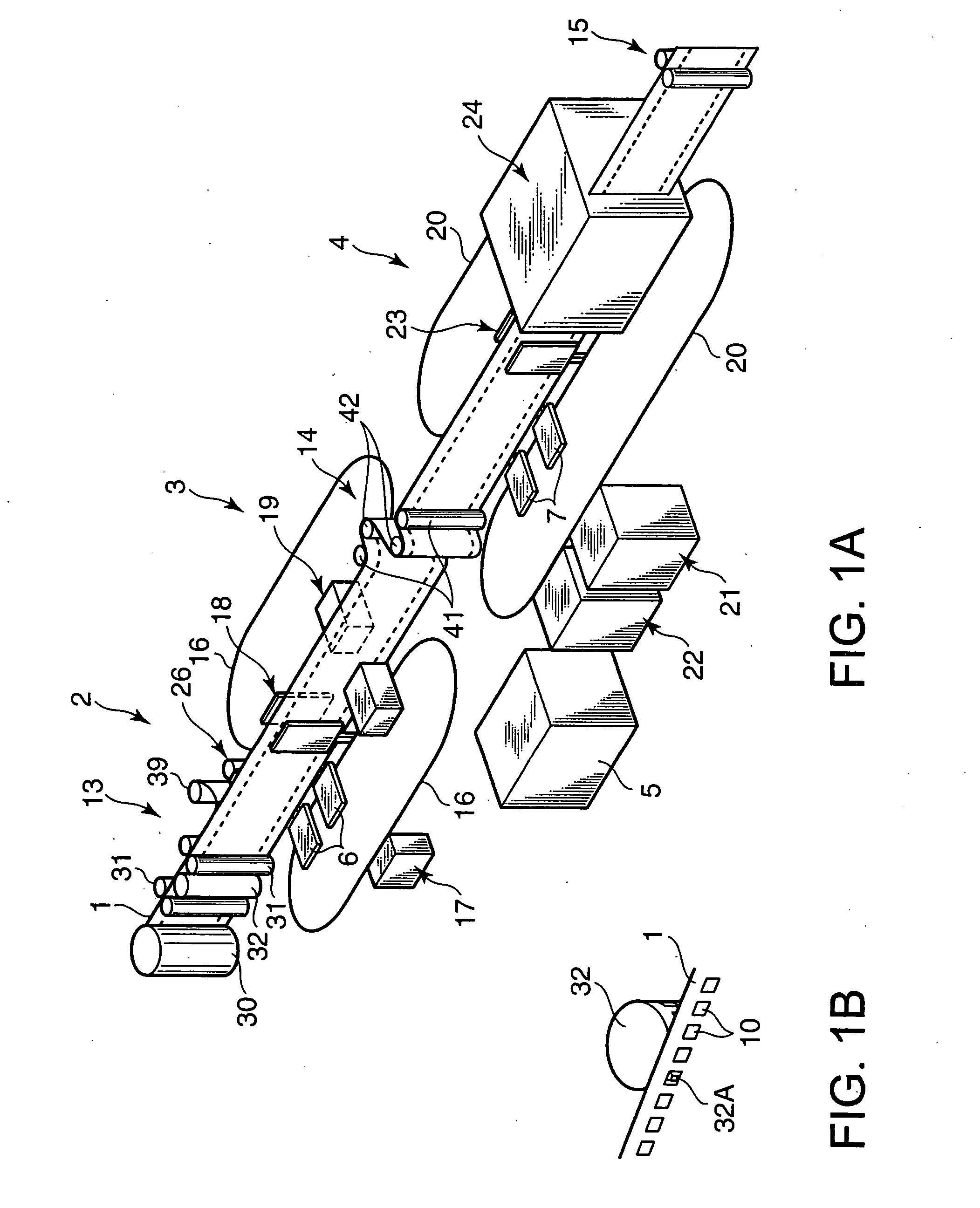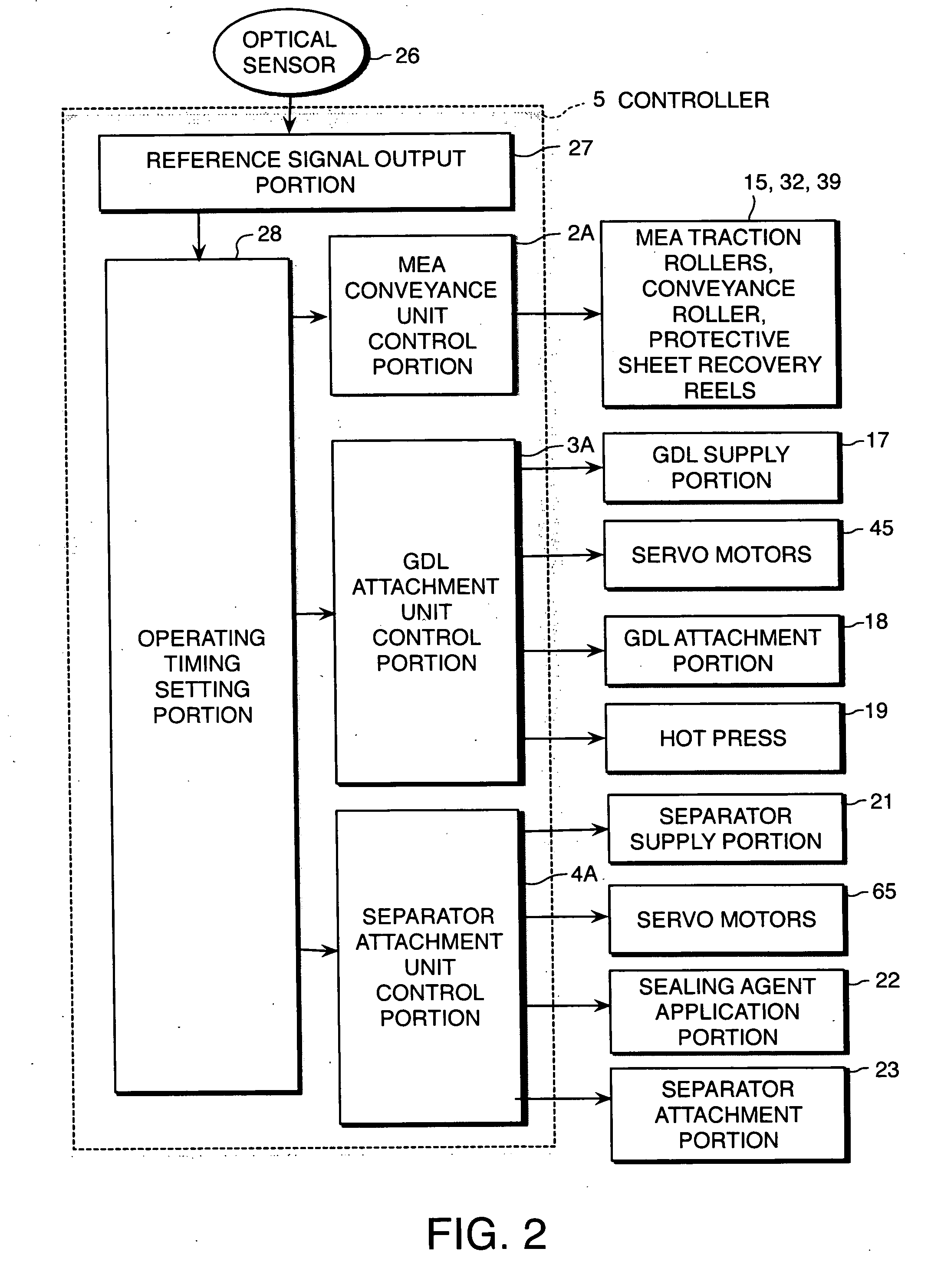Manufacture of fuel cell
a fuel cell and manufacturing technology, applied in the manufacture of cell components, sustainable manufacturing/processing, final product manufacturing, etc., can solve the problem of difficult positioning, and achieve the effect of reducing the feeding precision and efficiently manufacturing the fuel cell stack
- Summary
- Abstract
- Description
- Claims
- Application Information
AI Technical Summary
Benefits of technology
Problems solved by technology
Method used
Image
Examples
second embodiment
[0096] Next, referring to FIGS. 16A to 16C, this invention will be described.
[0097] In this embodiment, the separator 7 is formed on a conveyance film 95. The conveyance film 95 is formed with similar conveyance holes 10A to those formed in the MEA 1.
[0098] The fuel cell manufacturing device comprises an MEA conveyance unit 200 and a pair of separator conveyance units 40 disposed on either side thereof.
[0099] In the MEA conveyance unit 200, the MEA 1 is fed from the roll 30 of the MEA 1, which is wound around the reel 9, by a conveyance roller 32. Similarly to the first embodiment, catalyst layers are formed on the MEA 1 at fixed intervals and the conveyance holes 10 are formed at fixed intervals on the two outer sides of the catalyst layer. In contrast to the first embodiment, however, a protective sheet is not adhered to the MEA 1 as it passes the conveyance roller 132. Projections which engage with the holes 10 are formed on the outer periphery of the conveyance roller 132.
[01...
first embodiment
[0101] The separator conveyance unit 40 comprises a conveyance roller 132A which comprises similar projections to those formed on the conveyance roller 132 and rotates in synchronization with the conveyance roller 132. The conveyance roller 132A conveys the film 95 by rotating while the projections 132B engage with the holes 10A. The sealing agent application nozzle 78 is provided upstream of the conveyance roller 132A in the movement direction of the film 95. Similarly to the first embodiment, the sealing agent application nozzle 78 applies the sealing agent to a predetermined position, including the outer peripheral portion, of the separator 7.
[0102] Thus the film 95 adhered with the separators 7 is supplied to the two sides of the MEA 1. The separators 7 on the film 95 are pressed onto the MEA 1 by a pair of joining rollers 133.
[0103] As shown in FIG. 16C, projections 320 which penetrate the conveyance holes 10 and the holes 10A are formed on the outer periphery of one of the pa...
third embodiment
[0105] Next, referring to FIGS. 17A-28, this invention will be described.
[0106] First, referring to FIG. 17A, a fuel cell stack manufacturing device comprises a lamination unit 201, and an MEA conveyance unit 202 which supplies the lamination unit 201 with the MEA 1. The fuel cell manufacturing device further comprises a laminate supply unit 203 shown in FIG. 21, which supplies the lamination unit 201 with a laminate 210.
[0107] In the MEA conveyance unit 202, the MEA 1 is fed from the roll 30 of the MEA 1, which is wound around the reel 9, by two pairs of conveyance rollers 211 and supplied to the lamination unit 201.
[0108] Referring to FIG. 18, catalyst layers are formed on both surfaces of the MEA 1 in advance, and conveyance holes 212 are formed on both side portions of the MEA 1 at equal intervals in the lengthwise direction of the MEA 1. Furthermore, to assist the lamination unit 201 in cutting out the MEA 1, a rectangular perforation 213 is formed on the outer periphery of t...
PUM
 Login to View More
Login to View More Abstract
Description
Claims
Application Information
 Login to View More
Login to View More - R&D
- Intellectual Property
- Life Sciences
- Materials
- Tech Scout
- Unparalleled Data Quality
- Higher Quality Content
- 60% Fewer Hallucinations
Browse by: Latest US Patents, China's latest patents, Technical Efficacy Thesaurus, Application Domain, Technology Topic, Popular Technical Reports.
© 2025 PatSnap. All rights reserved.Legal|Privacy policy|Modern Slavery Act Transparency Statement|Sitemap|About US| Contact US: help@patsnap.com



